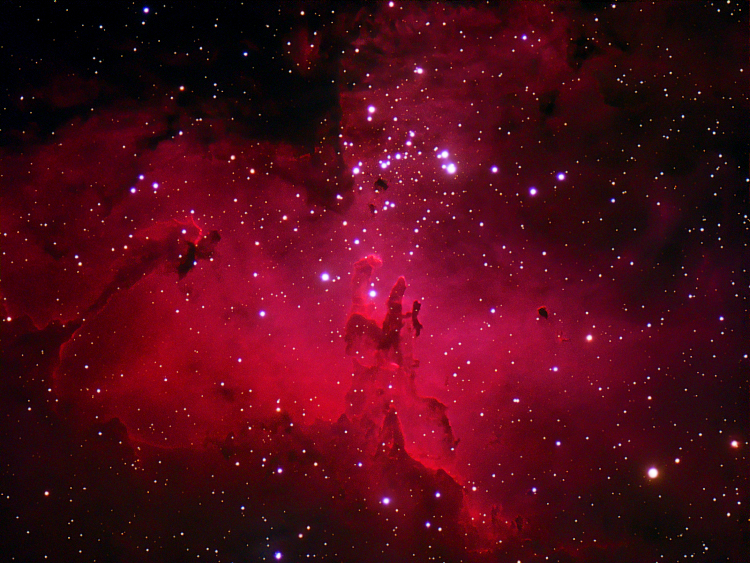The star cluster in M16 can be seen in dark skies with the naked eye and is easy to see in binoculars as a small faint patch of light. The nebulosity is more difficult to see, but some parts of it can be seen in small telescopes under favorable skies. Visually, the nebulosity appears colorless in small telescopes. Messier 16 was discovered in 1745-1746 by Jean-Philippe de Cheseaux. His notes mention only the star cluster, not the nebulosity. Charles Messier independently discovered the object on June 3rd, 1764 and noted that the cluster's stars appeared "enmeshed in a faint glow." The dark pillars in the center of the image are shown in this mapped color image by the Hubble Space Telescope. The dark spire of cold gas extending into the nebula from the left is over 50 trillion miles long, or about twice the distance from our Sun to the nearest star. Click here to see a Hubble image of the spire. The dark pillars of nebulosity are thought to be cold hydrogen gas and dust. Ultraviolet radiation from the very hot massive young stars in the cluster is eroding these pillars. The radiation causes the cold gas at the surface of the pillars to boil off, creating a lighter halo around the dark pillars. This gives a three-dimensional effect to the gas pillars, and makes them look like glowing coals in a fireplace. The central star cluster of M16 is thought to have formed out of the nebulosity about 5 and a half million years ago. |
||||||||||||||||||
